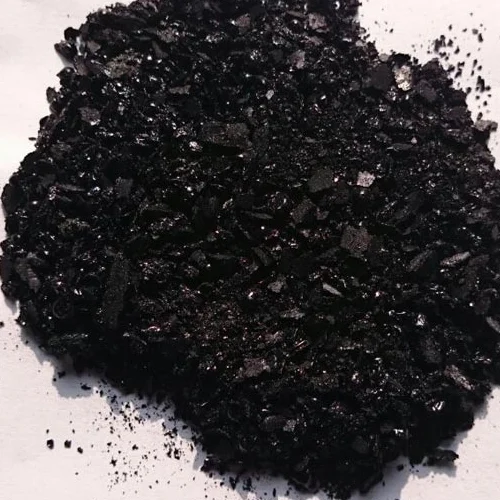Understanding the Properties and Applications of Sulphur Black in Textile Dyeing
The Importance of Sulphur Black in Textile Dyeing
Sulphur black is a prominent dye used in the textile industry, known for its deep, rich black shade. It is widely valued for its affordability, colorfastness, and effectiveness on natural fibers, especially cotton. The significance of sulphur black lies in its exceptional properties and the role it plays in modern garment manufacturing and dyeing processes.
One of the most notable characteristics of sulphur black is its excellent light fastness and wash fastness. This means that textiles dyed with this color maintain their depth and vibrancy even after repeated exposure to sunlight or multiple washes. Such durability is crucial for consumers who demand long-lasting products. The dye is often employed in the production of denim, where a strong black color is desired without compromising on quality.
The chemical composition of sulphur black allows it to bond effectively with cellulose fibers present in cotton. This strong affinity not only results in a deep black hue but also contributes to the overall strength of the dyed fabric. Garments made from sulphur black-dyed materials often exhibit less fading, ensuring that the items remain aesthetically pleasing over time.
sulphur black

Moreover, sulphur black is favored for its economic advantages. Compared to other black dyes, it is relatively inexpensive and can be produced in large quantities. This cost-effectiveness makes it an attractive option for manufacturers striving to keep production costs low while meeting consumer demands for quality and performance. The accessibility of sulphur black contributes to its widespread use across various segments of the textile market, from fashion apparel to industrial fabrics.
Despite its advantages, the use of sulphur black is not without its challenges. The dyeing process often requires a careful approach to manage the highly alkaline conditions necessary for its application. Improper handling can lead to uneven dyeing or even damage to the fabric. Therefore, manufacturers must invest in training and quality control measures to ensure that the dyeing process is executed efficiently and safely.
Environmental considerations also play a significant role in the use of sulphur black dye. The production and application of this dye can produce waste that must be managed properly to minimize environmental impact. Fortunately, advancements in textile manufacturing are leading to more sustainable practices, encouraging the reuse and recycling of water and materials involved in the dyeing process.
In summary, sulphur black holds an essential place in the textile industry due to its vibrant color, cost-effectiveness, and durability. While there are challenges related to its application and environmental impact, ongoing efforts in sustainable practices are promising. As the industry continues to evolve, sulphur black will likely remain a key player in the dyeing process, providing consumers with quality and longevity in their textiles. Expanding knowledge and improved techniques can ensure that this versatile dye remains relevant in the changing landscape of fashion and fabric production.
-
The Timeless Art of Denim Indigo Dye
NewsJul.01,2025
-
The Rise of Sulfur Dyed Denim
NewsJul.01,2025
-
The Rich Revival of the Best Indigo Dye
NewsJul.01,2025
-
The Enduring Strength of Sulphur Black
NewsJul.01,2025
-
The Ancient Art of Chinese Indigo Dye
NewsJul.01,2025
-
Industry Power of Indigo
NewsJul.01,2025
-
Black Sulfur is Leading the Next Wave
NewsJul.01,2025

Sulphur Black
1.Name: sulphur black; Sulfur Black; Sulphur Black 1;
2.Structure formula:
3.Molecule formula: C6H4N2O5
4.CAS No.: 1326-82-5
5.HS code: 32041911
6.Product specification:Appearance:black phosphorus flakes; black liquid

Bromo Indigo; Vat Bromo-Indigo; C.I.Vat Blue 5
1.Name: Bromo indigo; Vat bromo-indigo; C.I.Vat blue 5;
2.Structure formula:
3.Molecule formula: C16H6Br4N2O2
4.CAS No.: 2475-31-2
5.HS code: 3204151000 6.Major usage and instruction: Be mainly used to dye cotton fabrics.

Indigo Blue Vat Blue
1.Name: indigo blue,vat blue 1,
2.Structure formula:
3.Molecule formula: C16H10N2O2
4.. CAS No.: 482-89-3
5.Molecule weight: 262.62
6.HS code: 3204151000
7.Major usage and instruction: Be mainly used to dye cotton fabrics.

